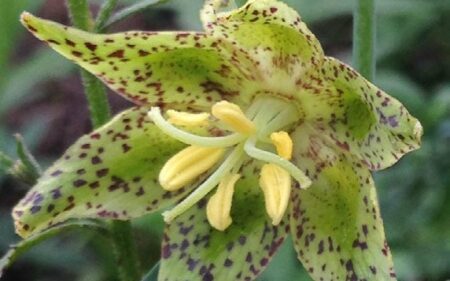Bees, Butterflies, and Other Pollinators Get a Boost from CDFA Funds
UPDATE: As of January 29, funds are still available! Read on to learn more and apply before March 1, 2024, to receive up to $200,000 to make your land pollinator-friendly!
Santa Barbara Botanic Garden is teaming up with the Cachuma Resource Conservation District, the Community Environmental Council, and the Ventura County Resource Conservation District to boost pollinator habitat on agricultural lands across California’s Central Coast. With funding from the California Department of Food and Agriculture (CDFA) and the Pollinator Habitat Program (PHP), our team will distribute nearly $2 million to ranchers and farmers in Santa Barbara and Ventura Counties. The financial support will subsidize landowners who are willing to create high-quality habitats and/or adopt management practices that help pollinators thrive on their ranches and farms.
California produces more than one-third of the nation’s vegetables and two-thirds of the nation’s fruit and nuts, of which an estimated $11.7 billion are dependent on pollinators. Pollinators are animals like bees, flies, and butterflies that help plaonts reproduce by moving pollen from one flower to another. Unfortunately, in recent years, the number of these helpful animals has severely declined. This funding will mark a critical step in mitigating the effects of this decline by directly supporting pollinator habitat installation and maintenance.

Our team will allocate funding to ranchers and farmers interested in adopting conservation-oriented practices on their lands. Practices can vary widely, and funding can be used towards the installation of hedgerows, addition of cover crops, adoption of conservation tillage, and other beneficial, but otherwise prohibitively expensive, interventions, to support pollinators. We will also offer training, advice, and support for ranchers and farmers as they implement their projects over a three-year period.
The gardens’ role, in particular, will be to work directly with ranchers and farmers to make site-specific native plant recommendations. Recommendations will take into account site specific conditions, what pollination needs a particular crop might have, and any land owner preferences. Our tailored recommendations will work to enhance food, nesting and breeding habitats essential for monarch butterflies, bumble bees and other pollinators. Because of their diversity, no single management technique will serve all pollinators, but commonly agreed-upon practices such as enhanced floral diversity, elongated blooming period, and high-quality nesting habitat have been shown to be beneficial. Santa Barbara Botanic Garden will also help develop a long-term monitoring plan. The monitoring plan will help us to determine just how good of a job we’re doing at supporting our pollinators and is important in informing any future restoration efforts.


We expect that, beyond pollinators, habitat installation and conservation-minded management practices will also support other beneficial species, enhance carbon sequestration, improve soil health and possibly enhance agricultural production.
The Community Environmental Council is working to identify eligible farms and ranches in the region. Applications are currently open for farmers and ranchers who wish to apply for up to $200,000 to plant and maintain pollinator habitats, such as hedgerows or cover crops.
Are you interested in applying for a PHP reimbursement?
 Donate
Donate




